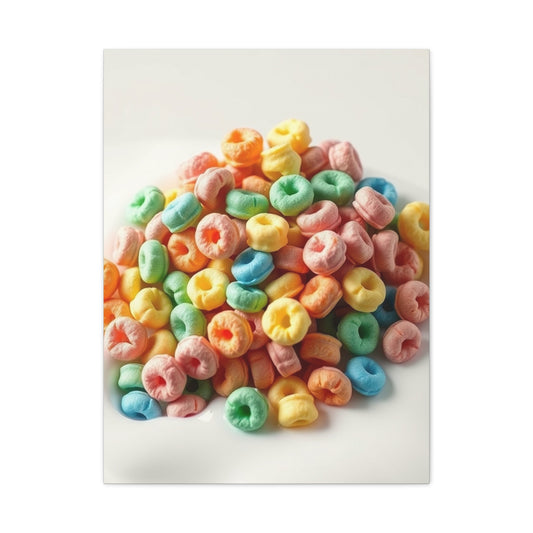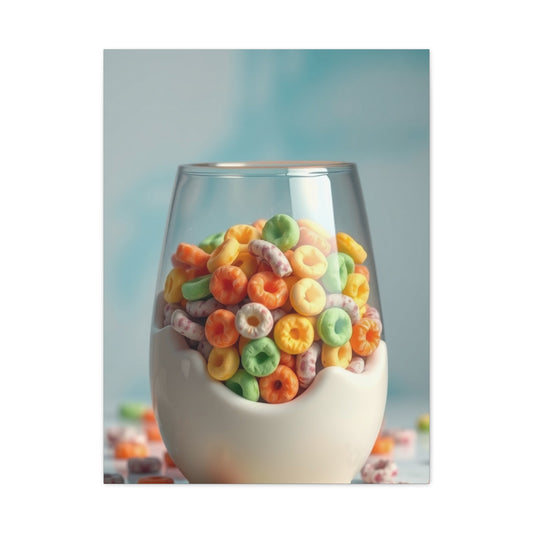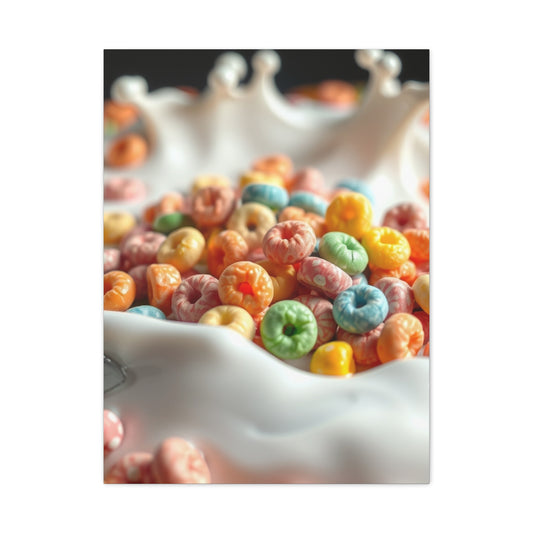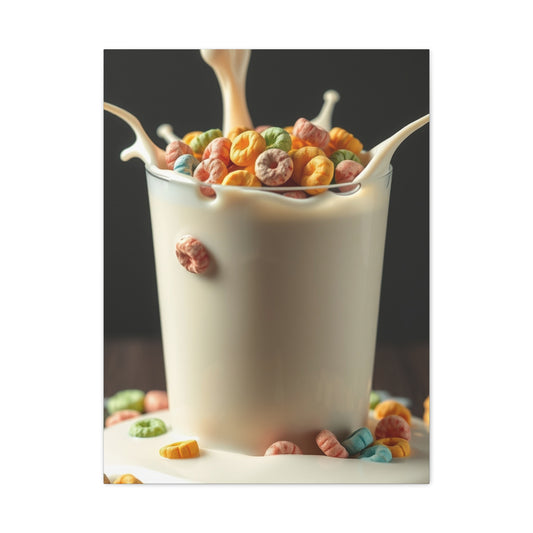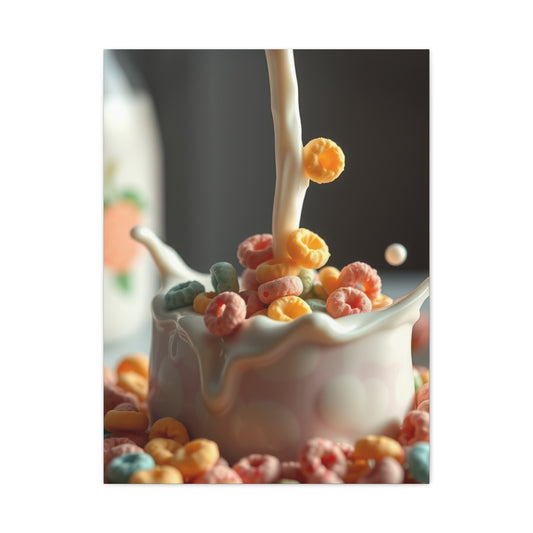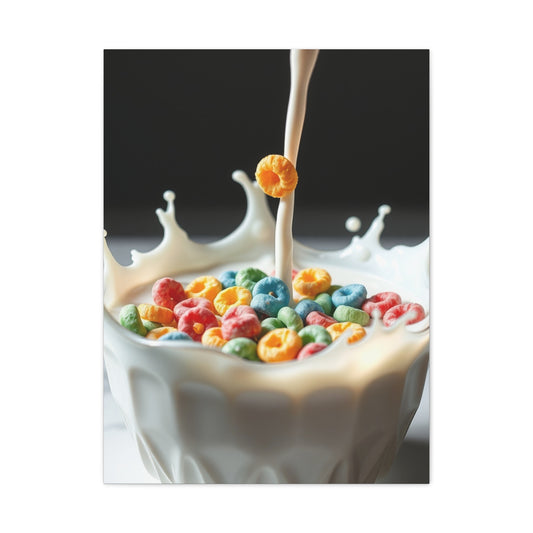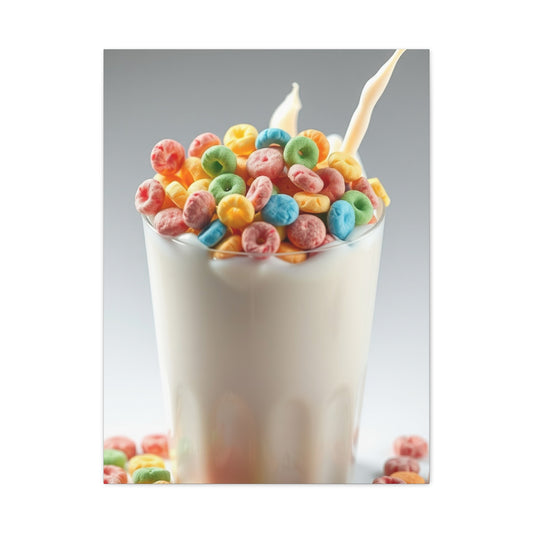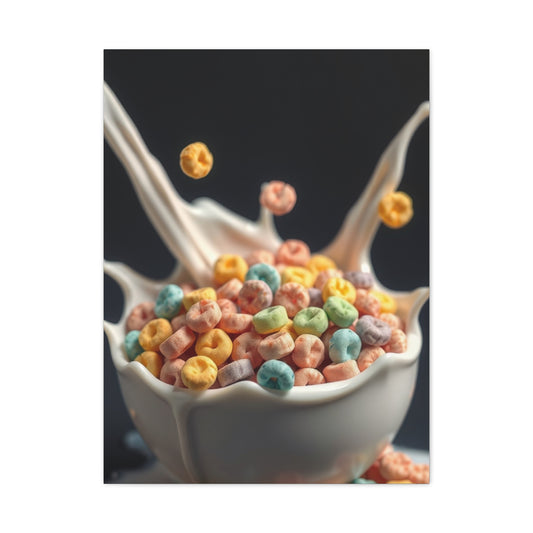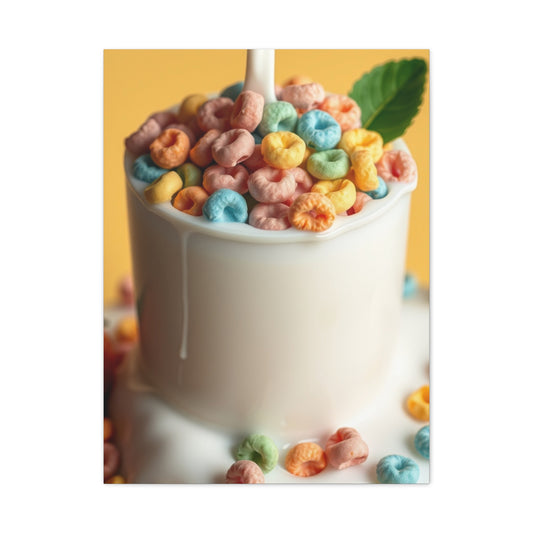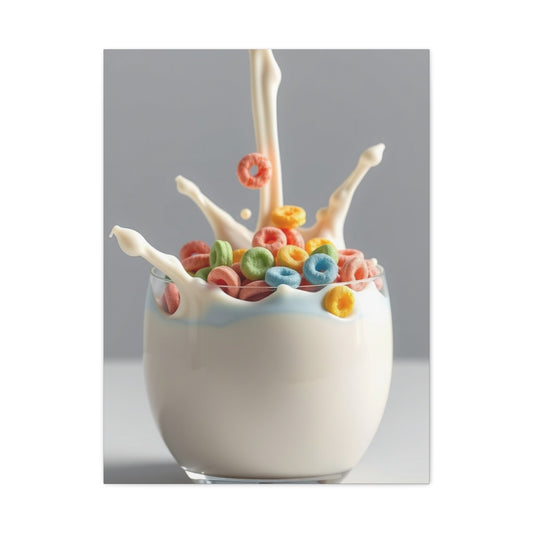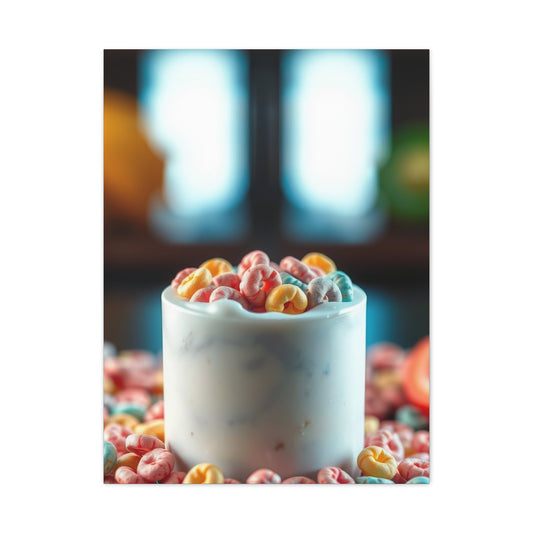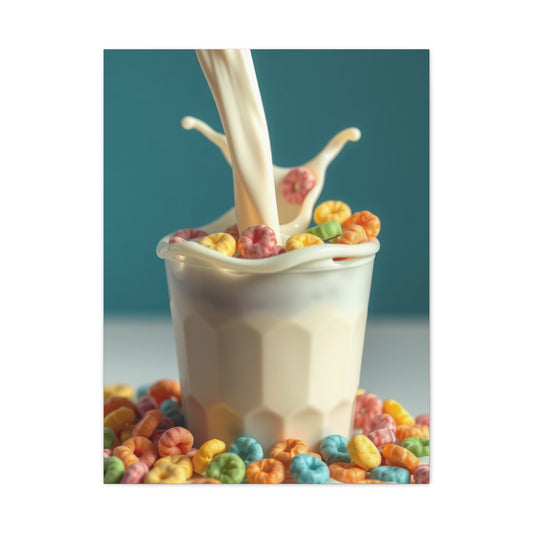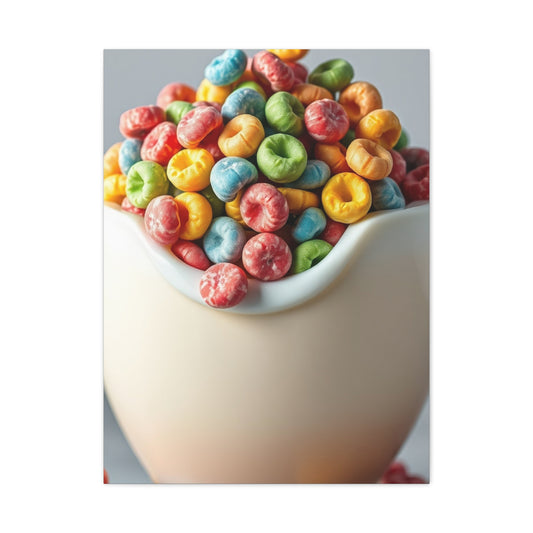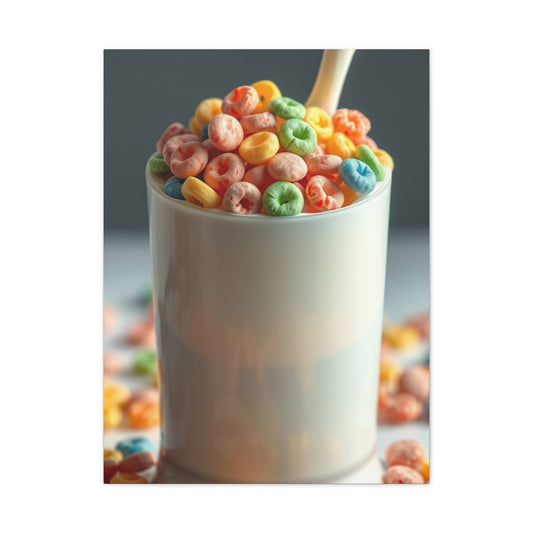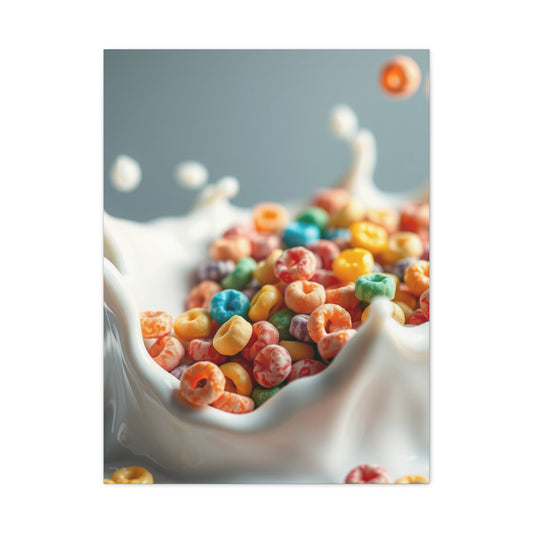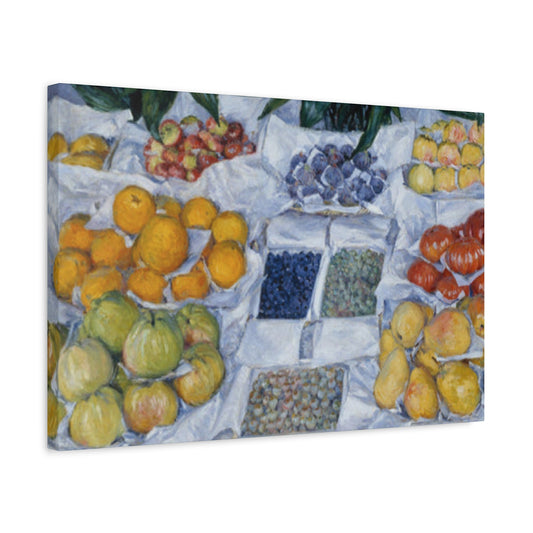Transform Your Kitchen into a Culinary Sanctuary with Stunning Wall Art
Vintage kitchen canvas prints represent a captivating fusion of nostalgia and contemporary interior design principles. These remarkable decorative elements transport viewers to bygone eras while maintaining relevance in modern culinary environments. The allure of vintage-inspired artwork stems from its ability to evoke memories of grandmother's kitchen, traditional cooking methods, and the warmth associated with family gatherings around food preparation areas.
Contemporary homeowners increasingly gravitate toward vintage kitchen canvas prints because they provide an authentic aesthetic that mass-produced decorations simply cannot replicate. These carefully curated pieces often feature antiquated cooking utensils, classic recipe cards, traditional preservation methods, and nostalgic imagery that speaks to our collective culinary heritage. The patina effect commonly found in vintage prints creates visual depth and character that transforms ordinary cooking spaces into inviting environments rich with personality and charm.
The manufacturing process behind quality vintage kitchen canvas prints involves sophisticated printing methods that ensure longevity and color retention. High-resolution digital printing on premium canvas materials guarantees that intricate details remain crisp and vibrant even in humid kitchen environments. The canvas substrate provides durability while maintaining the authentic texture that distinguishes genuine artwork from inferior paper-based alternatives.
Selecting appropriate vintage kitchen canvas prints requires careful consideration of existing color schemes, architectural elements, and personal preferences. Successful integration depends on understanding how sepia tones, muted colors, and distressed finishes complement various design styles. Whether your kitchen embraces traditional, transitional, or eclectic aesthetics, vintage canvas prints can serve as unifying elements that tie together disparate design components.
The psychological impact of vintage imagery in culinary spaces extends beyond mere decoration. Research indicates that nostalgic visual elements can enhance appetite, promote relaxation, and encourage social interaction. Vintage kitchen canvas prints tap into these emotional responses by creating environments that feel familiar, comfortable, and welcoming to both residents and guests.
Proper placement of vintage kitchen canvas prints requires strategic thinking about viewing angles, lighting conditions, and functional considerations. Installing artwork at appropriate heights ensures optimal visibility while avoiding interference with daily cooking activities. The interplay between natural and artificial lighting can dramatically affect how vintage prints appear throughout different times of day, making placement decisions crucial for maximizing visual impact.
Creating Warmth with Rustic Farmhouse Wall Art for Kitchen Environments
Rustic farmhouse wall art embodies the essence of rural simplicity and agricultural heritage while providing sophisticated decorative solutions for contemporary kitchens. This design philosophy celebrates imperfection, authenticity, and connection to nature through carefully selected visual elements that honor traditional farming communities and country living.
The popularity of rustic farmhouse wall art reflects broader cultural shifts toward sustainability, locally-sourced materials, and appreciation for handcrafted quality over mass production. These decorative pieces often incorporate natural textures, weathered finishes, and organic motifs that create visual harmony with wood cabinetry, stone countertops, and other natural materials commonly found in farmhouse-inspired kitchens.
Authentic rustic farmhouse wall art frequently features imagery related to agricultural pursuits, including livestock, barn structures, pastoral landscapes, and seasonal harvests. These visual elements reinforce connections between food preparation and agricultural origins, reminding viewers of the journey from farm to table. The emotional resonance of such imagery contributes to creating kitchens that feel grounded, purposeful, and connected to fundamental human experiences.
Material selection plays a crucial role in achieving authentic rustic farmhouse aesthetics. Reclaimed wood frames, distressed metal accents, and canvas prints with intentionally aged appearances contribute to the overall effect. The tactile qualities of these materials invite closer inspection and create sensory experiences that complement the visual impact of the artwork itself.
Color palettes associated with rustic farmhouse wall art typically emphasize earth tones, muted greens, warm browns, and cream hues that reflect natural environments. These subdued color schemes create calming atmospheres while providing neutral backdrops that allow other design elements to shine. The restrained approach to color selection prevents visual overwhelm while maintaining sophisticated aesthetic appeal.
Scale considerations become particularly important when selecting rustic farmhouse wall art for different kitchen configurations. Large pieces can serve as dramatic focal points in spacious cooking areas, while smaller works grouped together create intimate vignettes in compact spaces. The key lies in achieving proper proportion between artwork dimensions and available wall space while considering the scale of surrounding elements.
The versatility of rustic farmhouse wall art allows for creative mixing with other design styles. Contemporary kitchens can benefit from carefully selected rustic pieces that add warmth and character without overwhelming clean, modern lines. The juxtaposition between sleek contemporary surfaces and weathered artistic elements creates dynamic visual tension that prevents spaces from feeling sterile or impersonal.
Celebrating Nature's Bounty with Fruit and Vegetable Wall Posters
Fruit and vegetable wall posters represent one of the most logical and visually appealing decorative choices for culinary spaces. These vibrant artistic representations celebrate the natural beauty of fresh produce while creating educational opportunities for family members to learn about different varieties, seasonal availability, and nutritional benefits of various fruits and vegetables.
The artistic rendering of fresh produce in wall poster format allows for creative interpretations that range from photorealistic representations to stylized illustrations, watercolor interpretations, and vintage botanical drawings. Each artistic approach offers unique advantages depending on the desired aesthetic outcome and existing kitchen design elements. Photorealistic posters provide stunning visual impact through their detail and color accuracy, while illustrated versions offer whimsical charm and artistic interpretation.
Scientific accuracy in fruit and vegetable wall posters serves both decorative and educational purposes. High-quality posters often include botanical names, nutritional information, and harvest season details that transform decorative elements into learning tools. This dual functionality particularly appeals to families with children who can absorb knowledge about healthy eating while going about their daily routines in the kitchen.
Color psychology plays a significant role in the effectiveness of fruit and vegetable wall posters. The natural vibrancy of fresh produce imagery can stimulate appetite, promote positive associations with healthy eating, and create energizing environments that encourage culinary creativity. Different fruits and vegetables evoke various emotional responses through their inherent color properties and cultural associations.
Seasonal rotation of fruit and vegetable wall posters provides opportunities for dynamic decoration that reflects changing availability throughout the year. Spring posters might feature asparagus, strawberries, and fresh herbs, while autumn displays could showcase pumpkins, apples, and root vegetables. This rotating approach keeps kitchen decoration fresh and relevant while educating viewers about natural growing cycles.
The educational value of fruit and vegetable wall posters extends beyond basic identification to include preparation methods, recipe inspiration, and cultural significance of different produce items. Comprehensive poster series can illustrate various preparation techniques, cooking methods, and serving suggestions that inspire culinary experimentation and broaden dietary horizons.
Quality considerations for fruit and vegetable wall posters include print resolution, color accuracy, and material durability. Kitchen environments present unique challenges including humidity, temperature fluctuations, and potential exposure to cooking vapors. Premium poster materials with protective coatings ensure longevity while maintaining color vibrancy under challenging environmental conditions.
Brewing Inspiration with Coffee-Themed Kitchen Canvas Art
Coffee-themed kitchen canvas art speaks to the profound cultural significance of coffee in contemporary society while providing sophisticated decorative solutions for caffeine enthusiasts. These artistic representations encompass everything from detailed illustrations of coffee beans and brewing equipment to abstract interpretations of coffee culture and lifestyle imagery that celebrates the ritual and community aspects of coffee consumption.
The global coffee culture provides rich source material for artistic interpretation, including imagery from coffee-growing regions, traditional brewing methods, historic coffeehouse scenes, and contemporary café environments. This diverse visual vocabulary allows for personalized selection based on individual preferences, travel experiences, and cultural connections to coffee traditions from around the world.
Coffee bean artwork offers particularly compelling visual interest through the natural beauty of the coffee cherry, processing methods, and roasting transformations. Detailed illustrations can showcase the journey from coffee plant to brewed beverage, creating educational narratives that deepen appreciation for the complexity involved in producing quality coffee. The rich brown tones and organic shapes of coffee beans provide warm, earthy visual elements that complement various kitchen color schemes.
Brewing equipment imagery celebrates the mechanical artistry of coffee preparation tools, from traditional espresso machines to modern pour-over devices. These representations appeal to coffee enthusiasts who appreciate the craftsmanship involved in quality brewing equipment while adding industrial or steampunk aesthetic elements to kitchen environments. The metallic surfaces and intricate mechanical details of brewing equipment create fascinating visual textures that reward close examination.
Coffee shop ambiance artwork captures the social and cultural dimensions of coffee consumption through depictions of bustling cafés, intimate coffee conversations, and the architectural elements that define coffee culture spaces. These broader environmental scenes can make home kitchens feel more connected to the larger coffee community while inspiring the creation of personal coffee corners or breakfast nooks that emulate beloved café experiences.
Typography-based coffee artwork incorporates meaningful quotes, brewing instructions, or coffee-related wordplay that adds intellectual dimension to decorative schemes. The intersection of visual design and meaningful text creates layered experiences that reward both casual glances and extended contemplation. Carefully selected typography can reinforce personal values related to coffee culture, craftsmanship, or community building.
The scientific aspects of coffee provide additional artistic inspiration through illustrations of coffee chemistry, brewing parameters, and flavor profile wheels. These more technical representations appeal to serious coffee enthusiasts while adding educational value to kitchen environments. The geometric patterns and scientific diagrams create modern, sophisticated visual elements that complement contemporary kitchen designs.
Elevating Entertaining Spaces with Wine and Bar Wall Décor
Wine and bar wall décor transforms ordinary kitchens into sophisticated entertaining spaces that celebrate the artistry and culture surrounding alcoholic beverages. These decorative elements range from vineyard landscape photography to detailed illustrations of wine-making processes, vintage bar equipment, and cocktail preparation scenes that capture the elegance and ritual associated with fine dining and entertaining.
Vineyard imagery provides natural beauty that connects kitchen spaces to the agricultural origins of wine production. Rolling hills covered with grapevines, rustic winery buildings, and harvest scenes create romantic, pastoral atmospheres that transport viewers to wine country destinations. The seasonal changes depicted in vineyard photography offer opportunities for rotating displays that reflect different stages of the wine-making process throughout the year.
Historical wine and bar imagery celebrates the rich traditions surrounding alcohol production and consumption across different cultures and time periods. Vintage wine labels, antique bar equipment, prohibition-era imagery, and traditional wine-making tools provide fascinating glimpses into the evolution of drinking culture. These historical elements add depth and sophistication to kitchen environments while serving as conversation starters during social gatherings.
The artistic representation of wine itself offers numerous creative possibilities, from abstract interpretations of wine colors and textures to detailed botanical illustrations of grape varieties. The visual complexity of wine – its transparency, color variations, and interaction with light – provides compelling subject matter for artistic exploration. These representations can be particularly effective when lit appropriately to emphasize the luminous qualities of wine imagery.
Cocktail culture artwork encompasses the theatrical aspects of mixology, from classic cocktail recipes illustrated in vintage poster styles to contemporary interpretations of craft cocktail movement aesthetics. The geometric forms of glassware, colorful liqueur layers, and garnish presentations create visually striking compositions that celebrate the artistry involved in professional bartending.
Bar equipment illustrations highlight the mechanical beauty of wine openers, cocktail shakers, vintage bar tools, and glassware collections. These functional objects possess sculptural qualities that translate beautifully into artistic representations. The interplay of metallic surfaces, glass transparency, and mechanical precision creates sophisticated visual elements that complement modern kitchen aesthetics.
Wine region maps and appellations provide both decorative and educational value by illustrating the geographic diversity of wine production. These cartographic elements can inspire travel dreams while providing practical reference information for wine enthusiasts. The combination of geographic accuracy and artistic interpretation creates unique decorative pieces that serve multiple purposes within kitchen environments.
Embracing Simplicity through Minimalist Kitchen Typography Prints
Minimalist kitchen typography prints represent the intersection of functional communication and aesthetic refinement, creating powerful visual statements through carefully selected words, phrases, and typographic arrangements. This design approach prioritizes clarity, intentionality, and visual hierarchy while eliminating unnecessary decorative elements that might compete for attention or create visual clutter.
The philosophy behind minimalist typography emphasizes the inherent beauty of letterforms, spacing relationships, and the powerful communication potential of well-chosen words. In kitchen environments, these principles translate into artwork that can inspire daily cooking activities, reinforce positive habits, or simply provide moments of contemplation amid busy household routines.
Font selection becomes crucial in minimalist typography prints, as the personality and readability of chosen typefaces directly impact the overall effectiveness of the artwork. Sans-serif fonts often provide clean, contemporary appearances that complement modern kitchen designs, while serif fonts can add traditional elegance or scholarly sophistication. Script fonts introduce personality and warmth but require careful selection to ensure readability at various viewing distances.
Color choices in minimalist typography prints significantly influence mood and integration with existing kitchen color schemes. Monochromatic approaches create sophisticated, timeless appearances that won't compete with other design elements. Limited color palettes using two or three carefully selected hues can add visual interest while maintaining the essential simplicity that defines minimalist aesthetics.
The power of negative space in minimalist typography cannot be overstated. Strategic use of white space or background areas allows text elements to breathe while creating visual balance and preventing overwhelming compositions. This approach requires confidence in restraint and understanding that what's left out can be as important as what's included.
Message selection for kitchen typography prints ranges from practical cooking reminders to inspirational quotes about food, family, and hospitality. The most effective messages resonate with daily kitchen activities while providing motivation, humor, or wisdom that enhances the cooking experience. Personal relevance and authenticity in message selection ensure that typography prints become meaningful elements rather than generic decorations.
Scale and proportion considerations affect both readability and visual impact of minimalist typography prints. Large-format prints with generous letter spacing can create dramatic focal points, while smaller pieces with intricate typography provide intimate reading experiences that reward closer inspection. The relationship between text size and viewing distance determines optimal sizing for different kitchen locations.
Inspiring Daily Cooking with Meaningful Culinary Quote Wall Art
Culinary quote wall art transforms kitchens into spaces of inspiration and reflection by incorporating meaningful words and phrases that celebrate cooking, food culture, and the social dimensions of meal preparation. These thoughtfully selected quotations can motivate culinary exploration, reinforce family values, or simply provide moments of joy and contemplation during daily kitchen activities.
The selection of appropriate culinary quotes requires consideration of personal cooking philosophy, family dynamics, and the desired emotional atmosphere within the kitchen space. Inspirational quotes about creativity, nourishment, and hospitality can encourage ambitious cooking projects and gracious entertaining. Humorous food-related sayings might lighten the mood during stressful meal preparation periods, while profound reflections on food culture can add intellectual depth to culinary environments.
Famous chef quotations provide particular appeal for serious cooking enthusiasts, offering wisdom from culinary masters who have dedicated their lives to perfecting their craft. These professional insights can inspire home cooks to approach their own culinary efforts with greater intention, creativity, and respect for ingredients and traditional techniques.
Cultural diversity in culinary quote selection allows kitchens to reflect the global nature of contemporary food culture. Proverbs and sayings about food from different cultures provide opportunities to explore various culinary philosophies while creating inclusive environments that celebrate international cooking traditions. These multicultural elements can inspire exploration of unfamiliar ingredients and cooking methods.
Typography design in culinary quote wall art requires careful balance between readability and aesthetic appeal. The visual presentation of text must complement the meaning of the words while creating harmonious relationships with surrounding kitchen elements. Typeface selection, letter spacing, and line arrangement all contribute to the overall effectiveness of quote-based artwork.
The positioning of culinary quote wall art within kitchen spaces affects both visibility and impact. Quotes placed near primary work areas can provide daily inspiration during cooking activities, while those positioned in dining areas might encourage meaningful conversation during meals. Strategic placement ensures that motivational messages are encountered naturally during regular kitchen use.
Personalization opportunities in culinary quote wall art include family mottos, favorite recipe names, or meaningful phrases that reflect individual cooking journeys. Custom quotes can commemorate special occasions, honor family traditions, or celebrate personal culinary achievements. This personalized approach creates unique decorative elements that cannot be replicated in other homes.
Embracing Contemporary Aesthetics with Modern Food Illustration Wall Posters
Modern food illustration wall posters showcase the artistic potential of culinary subjects through contemporary design sensibilities, innovative color usage, and creative interpretive approaches that transform familiar food items into striking visual statements. These contemporary artistic interpretations bridge the gap between traditional food photography and abstract artistic expression.
The evolution of food illustration reflects changing attitudes toward cooking, dining, and food culture in contemporary society. Modern illustrators approach culinary subjects with fresh perspectives that emphasize geometric forms, unexpected color combinations, and stylized representations that capture the essence of food items while maintaining artistic sophistication.
Digital illustration techniques enable unprecedented creative freedom in modern food poster creation. Artists can manipulate colors, textures, and proportions to create visually stunning representations that might be impossible to achieve through traditional photography. This creative license allows for artistic interpretations that emphasize particular aspects of food items while creating unique aesthetic experiences.
Abstract interpretations of familiar foods challenge viewers to see everyday culinary items from new perspectives. Stylized vegetables, geometric fruit arrangements, and deconstructed recipe illustrations encourage deeper contemplation of food's visual qualities beyond their nutritional or culinary properties. These artistic approaches can transform routine cooking activities into opportunities for aesthetic appreciation.
Color theory plays a fundamental role in modern food illustration effectiveness. Contemporary artists often employ unexpected color palettes that departure from naturalistic representations while maintaining recognizable subject matter. These bold color choices can energize kitchen environments and create focal points that command attention without overwhelming other design elements.
The integration of modern food illustrations with contemporary kitchen design requires understanding of how artistic elements interact with architectural features, lighting conditions, and functional requirements. Successful integration balances artistic impact with practical considerations to create cohesive environments that support both aesthetic enjoyment and efficient kitchen operations.
Scale and composition in modern food illustration wall posters can range from intimate detailed studies to large-format statement pieces that dominate entire walls. The choice between detailed single-subject illustrations and complex multi-element compositions depends on available space, existing decorative elements, and desired visual impact.
Celebrating Italian Culinary Heritage through Pasta and Italian Food Wall Prints
Pasta and Italian food wall prints celebrate one of the world's most beloved culinary traditions through artistic representations that capture the passion, craftsmanship, and cultural significance of Italian cuisine. These decorative elements transport kitchen spaces to the heart of Italy while inspiring authentic cooking experiences and appreciation for traditional preparation methods.
The visual appeal of pasta-themed artwork stems from the sculptural qualities inherent in various pasta shapes, the golden colors of dried pasta against rich sauce backgrounds, and the theatrical presentation styles associated with Italian dining culture. These artistic elements create dynamic compositions that celebrate both the aesthetic and cultural dimensions of Italian food traditions.
Traditional Italian food preparation imagery offers rich subject matter for wall prints, including hand-rolled pasta creation, traditional sauce preparation, regional specialties, and family cooking scenes that emphasize the social aspects of Italian meal preparation. These representations connect modern kitchens to centuries-old traditions while inspiring authentic cooking approaches.
Regional Italian cuisine diversity provides extensive artistic inspiration through distinctive local specialties, unique ingredients, and traditional preparation methods that vary significantly across different Italian regions. Wall prints celebrating regional differences can educate viewers about Italian culinary geography while inspiring exploration of unfamiliar dishes and cooking techniques.
The Mediterranean diet connection inherent in Italian cuisine imagery promotes healthy eating philosophies through visual representations of fresh vegetables, quality olive oils, fresh herbs, and whole grains that form the foundation of traditional Italian cooking. These health-conscious elements can reinforce positive dietary choices while maintaining aesthetic appeal.
Italian wine culture integration in food-themed wall prints acknowledges the important relationship between food and wine in Italian dining traditions. Artistic representations that combine food and wine elements create sophisticated compositions that celebrate the complete Italian dining experience while inspiring elevated entertaining approaches.
Seasonal Italian cooking imagery reflects the importance of ingredient seasonality in authentic Italian cuisine. Wall prints featuring spring vegetables, summer tomatoes, autumn harvests, or winter comfort foods can inspire seasonal menu planning while maintaining visual interest throughout the year through rotating displays.
Indulging Sweet Creativity with Baking and Dessert Canvas Art
Baking and dessert canvas art captures the whimsical, creative, and indulgent aspects of pastry arts while providing decorative elements that celebrate the technical precision and artistic flair required for successful baking endeavors. These delightful artistic representations can inspire ambitious baking projects while adding sweetness and charm to kitchen environments.
The visual complexity of baked goods provides exceptional artistic subject matter through intricate textures, rich colors, and elaborate decorative details that characterize professional pastry work. Layer cakes with detailed piping, delicate pastries with flaky crusts, and artisanal bread with complex scoring patterns offer fascinating visual elements that reward detailed examination.
Vintage bakery imagery evokes nostalgia for traditional neighborhood bakeries, family baking traditions, and the craftsmanship associated with artisanal bread and pastry production. These historical elements can transform modern kitchens into spaces that honor baking heritage while inspiring continuation of traditional techniques and recipes.
The science of baking provides additional artistic inspiration through illustrations of chemical processes, ingredient interactions, and the precise measurements that distinguish successful baking from cooking's more intuitive approaches. These technical elements appeal to detail-oriented bakers while adding educational value to decorative schemes.
International dessert traditions offer opportunities to explore global baking cultures through artistic representations of French pastries, Italian gelato, German strudels, Japanese wagashi, and countless other traditional sweets. This multicultural approach can inspire culinary adventures while creating inclusive environments that celebrate diversity in dessert traditions.
Seasonal baking imagery reflects the importance of holiday traditions, seasonal ingredients, and celebration-centered baking that punctuates annual cycles. Spring pastries featuring fresh berries, summer ice cream themes, autumn pie celebrations, and winter holiday cookies provide natural rotation opportunities that keep baking-themed artwork relevant throughout the year.
The presentation aspects of dessert photography and illustration emphasize plating techniques, garnish selection, and styling approaches that elevate home baking efforts. Professional presentation standards depicted in dessert artwork can inspire higher standards in home baking while providing practical guidance for special occasion dessert preparation.
Cultivating Natural Beauty with Kitchen Herbs Wall Décor
Kitchen herbs wall décor celebrates the intersection of gardening, cooking, and natural beauty through artistic representations that honor the essential role of herbs in culinary traditions worldwide. These botanical-inspired decorative elements provide both visual appeal and practical inspiration for incorporating fresh herbs into daily cooking routines.
The botanical accuracy of herb illustrations serves educational purposes while maintaining artistic beauty through detailed renderings that showcase leaf structures, growth patterns, and flowering characteristics. These scientific illustrations can help kitchen users identify different herb varieties while appreciating the natural artistry inherent in plant forms and growth patterns.
Herb garden planning inspiration emerges from wall décor that illustrates companion planting relationships, seasonal growing patterns, and harvesting techniques that optimize herb garden productivity. These practical elements transform decorative artwork into functional references that support successful herb gardening endeavors whether in outdoor gardens or indoor container systems.
Culinary herb pairing guidance integrated into decorative elements provides practical cooking support through visual reminders of which herbs complement specific ingredients, cooking methods, or regional cuisine styles. This functional approach to herb-themed décor combines aesthetic appeal with practical utility that enhances daily cooking experiences.
The aromatic associations of herb imagery can trigger sensory memories that enhance the psychological impact of herb-themed wall décor. Visual representations of fragrant herbs like basil, rosemary, thyme, and lavender can evoke olfactory memories that make kitchen spaces feel more inviting and inspire creative cooking endeavors.
Preservation method illustrations within herb-themed décor can educate viewers about traditional techniques for drying, freezing, and storing herbs to maintain their potency and flavor throughout seasons when fresh varieties aren't available. These practical elements ensure that herb enthusiasm can continue year-round regardless of growing season limitations.
Historic herb usage documentation through artistic representations acknowledges the medicinal and culinary heritage of herbs across different cultures and time periods. This historical perspective adds depth to contemporary herb appreciation while connecting modern cooking practices to traditional knowledge systems that recognized herbs' multiple beneficial properties.
Energizing Kitchens with Colorful Fruit Wall Posters
Colorful fruit wall posters infuse kitchen environments with natural vibrancy, seasonal beauty, and positive energy through artistic representations that celebrate the rainbow of colors, textures, and forms found in fresh fruit varieties. These dynamic decorative elements can transform neutral kitchen spaces into energizing environments that promote healthy eating habits and culinary enthusiasm.
The psychological impact of bright fruit colors in kitchen environments extends beyond mere decoration to influence mood, appetite, and overall well-being. Research indicates that exposure to vibrant natural colors can reduce stress, increase energy levels, and promote positive associations with healthy food choices. Colorful fruit imagery harnesses these beneficial effects while providing stunning visual focal points.
Tropical fruit imagery offers particularly striking visual impact through exotic colors, unusual forms, and textures that many viewers might not encounter in their daily lives. Dragon fruit with its dramatic pink exterior and speckled interior, passion fruit with its wrinkled purple skin and jewel-like seeds, and rambutan with its spiky red exterior create fascinating visual studies that expand viewers' awareness of global fruit diversity.
Seasonal fruit progressions depicted in wall poster series can track the changing availability of different fruits throughout the year while maintaining visual interest through rotating displays. Spring strawberries, summer stone fruits, autumn apples and pears, and winter citrus varieties provide natural rotation schedules that keep fruit-themed décor fresh and relevant.
Artistic interpretation styles for fruit imagery range from hyperrealistic photography that showcases every detail of fruit surfaces and textures to stylized illustrations that emphasize particular visual qualities like color, form, or pattern. Abstract interpretations can focus on specific elements like the spiral pattern of pineapple skin or the radiating segments of citrus fruits.
Nutritional education integration within colorful fruit posters adds practical value to decorative elements through inclusion of vitamin content, health benefits, and preparation suggestions. This educational approach transforms wall décor into useful references that support healthy eating goals while maintaining aesthetic appeal.
The compositional possibilities for fruit imagery include single-specimen studies that showcase individual fruits in detail, abundant harvest scenes that celebrate agricultural productivity, and artistic arrangements that emphasize color relationships and visual harmony. Each compositional approach offers unique advantages depending on available space and desired visual impact.
Starting Days Right with Breakfast-Themed Wall Décor
Breakfast-themed wall décor celebrates the most important meal of the day through artistic representations that capture the comfort, nutrition, and social significance of morning meals. These dawn-inspired decorative elements can create positive associations with healthy breakfast habits while establishing inviting environments that encourage family meal-sharing experiences.
Morning ritual imagery acknowledges the ceremonial aspects of breakfast preparation including coffee brewing, fresh juice creation, and the careful arrangement of breakfast components that transform simple morning nutrition into meaningful daily experiences. These ritual representations can inspire more intentional breakfast approaches while adding sophistication to morning routine environments.
International breakfast traditions provide diverse subject matter for wall décor that celebrates global morning meal customs from continental European spreads to traditional Asian breakfast compositions. This multicultural approach can inspire breakfast variety while creating educational opportunities about different cultural approaches to morning nutrition.
Healthy breakfast promotion through visual representations of nutritious morning meal components can reinforce positive dietary choices while maintaining aesthetic appeal. Imagery featuring fresh fruits, whole grains, quality proteins, and balanced meal compositions supports healthy eating goals without appearing preachy or medicinal.
The comfort food aspects of breakfast imagery acknowledge the emotional significance of morning meals through representations of familiar favorites like pancakes, waffles, fresh pastries, and other indulgent breakfast treats that provide psychological comfort and positive start-of-day associations.
Family breakfast scenes emphasize the social dimensions of morning meals through imagery that celebrates shared breakfast experiences, intergenerational cooking cooperation, and the unhurried conversation that quality breakfast time can provide when prioritized within busy family schedules.
Seasonal breakfast variations depicted in wall décor can inspire menu changes that take advantage of seasonal ingredient availability while maintaining visual interest through rotating displays that reflect changing seasons and associated breakfast preferences throughout the year.
Recreating Café Atmosphere with Coffee Shop Style Wall Art
Coffee shop style wall art recreates the distinctive atmosphere of contemporary café culture through artistic elements that capture the creativity, community, and craftsmanship associated with specialty coffee environments. These café-inspired decorative pieces can transform home kitchens into spaces that emulate the welcoming, creative energy found in favorite coffee shops.
Chalkboard menu aesthetics provide flexible decorative options that can be updated regularly to reflect changing preferences, seasonal offerings, or special occasions. The handwritten appearance of chalk lettering adds personal touch while creating authentic café atmosphere that encourages experimentation with different coffee preparations and seasonal menu variations.
Industrial design elements commonly found in contemporary coffee shops translate effectively into home kitchen décor through artwork featuring exposed brick backgrounds, metal brewing equipment, Edison bulb lighting, and reclaimed wood accents. These urban industrial components create sophisticated, modern environments that appeal to city-dwelling coffee enthusiasts.
Artisan coffee culture imagery celebrates the craftsmanship involved in quality coffee production from bean sourcing through brewing excellence. Artistic representations of latte art, precision brewing equipment, and careful coffee preparation rituals acknowledge the skill required for exceptional coffee while inspiring higher standards in home coffee preparation.
Community gathering spaces depicted in coffee shop artwork emphasize the social dimensions of café culture through scenes of conversation, collaboration, and the informal networking that makes coffee shops important community gathering places. These social elements can inspire kitchen designs that prioritize gathering and conversation.
Global coffee culture diversity offers rich artistic inspiration through imagery representing different international coffee traditions, from Italian espresso culture to Turkish coffee ceremonies. This multicultural approach expands appreciation for coffee's global significance while inspiring exploration of unfamiliar preparation methods and serving traditions.
The entrepreneurial spirit associated with independent coffee shops provides inspiration for artwork that celebrates small business ownership, creative risk-taking, and community-focused business approaches. These entrepreneurial themes can inspire culinary creativity while acknowledging the passion required for food service excellence.
Cooking Spaces with Strategic Wall Print Placement
Wall prints for cooking spaces require strategic placement that balances aesthetic impact with practical kitchen functionality while ensuring that decorative elements enhance rather than interfere with efficient food preparation activities. Successful integration considers sight lines, lighting conditions, and workflow patterns that characterize well-designed kitchen environments.
Workflow consideration in wall print placement ensures that decorative elements don't obstruct movement patterns, interfere with cabinet or appliance access, or create safety hazards in active cooking areas. Strategic positioning can actually improve kitchen functionality by providing visual interest in underutilized wall areas while keeping critical work zones clear and accessible.
Lighting interaction with wall prints affects visibility, color accuracy, and overall visual impact throughout different times of day and varying artificial lighting conditions. Understanding how natural and artificial light sources interact with different print materials and surface finishes enables optimal placement decisions that maximize artistic effectiveness.
Moisture and heat considerations in kitchen environments require selecting appropriate materials and protective measures for wall prints that will be exposed to cooking vapors, temperature fluctuations, and humidity variations. Premium printing materials and protective coatings ensure longevity while maintaining color vibrancy under challenging environmental conditions.
Scale proportions between wall prints and kitchen elements must create harmonious relationships that neither overwhelm compact spaces nor disappear in large environments. Successful scaling considers cabinet heights, ceiling elevations, and architectural features while ensuring that artwork remains visible and impactful from various positions within the kitchen.
Grouping strategies for multiple wall prints can create cohesive artistic statements while maintaining individual piece integrity. Gallery wall approaches, linear arrangements, or thematic groupings each offer distinct advantages depending on available wall space and desired visual impact.
Maintenance accessibility ensures that wall prints remain clean and attractive through routine kitchen cleaning activities. Placement decisions should consider ease of dusting, potential splashing from cooking activities, and long-term maintenance requirements that keep artwork looking fresh and inviting.
Creating Cohesive Themes through Coordinated Kitchen Wall Décor
Coordinated kitchen wall décor creates unified aesthetic experiences through carefully planned combinations of artwork, color schemes, and stylistic approaches that reinforce chosen design themes while avoiding visual chaos or conflicting messages. This comprehensive approach ensures that individual decorative elements work together to create greater impact than isolated pieces could achieve independently.
Theme development begins with identifying core values, lifestyle preferences, and aesthetic goals that will guide all decorative decisions within the kitchen environment. Whether pursuing modern minimalism, rustic charm, global fusion, or vintage nostalgia, clear thematic direction prevents random accumulation of disparate elements that fail to create cohesive environments.
Color coordination across multiple wall décor pieces requires understanding of color theory principles while maintaining sufficient variety to prevent monotonous appearances. Strategic use of accent colors, complementary relationships, and varying saturation levels creates visual interest while preserving overall harmony throughout the decorative scheme.
Style consistency doesn't require identical artistic approaches but does demand compatible aesthetic languages that reinforce rather than contradict chosen themes. Mixing realistic photography with stylized illustrations, combining vintage elements with contemporary pieces, or integrating different cultural influences requires careful curation to maintain coherence.
Proportion relationships between different decorative elements affect overall visual balance while ensuring that no single piece dominates the environment inappropriately. Strategic variation in sizes, shapes, and visual weights creates dynamic compositions that maintain interest while supporting functional kitchen requirements.
Material coordination considers how different substrates, frames, and surface finishes interact within single environments. Mixing canvas prints, metal signs, wooden elements, and paper posters requires understanding of how different materials reflect light, age over time, and contribute to overall environmental character.
Seasonal adaptation strategies allow coordinated kitchen décor to evolve throughout the year while maintaining thematic consistency. Planning for rotating elements, seasonal color variations, or holiday-specific additions ensures that decorative schemes remain fresh and relevant without requiring complete redesign efforts.
Conclusion
Kitchen wall art represents far more than simple decoration; it embodies the transformation of functional cooking spaces into personalized environments that celebrate food culture, inspire culinary creativity, and reflect individual values and aesthetic preferences. Through careful selection and strategic placement of artwork ranging from vintage canvas prints to modern abstract compositions, homeowners can create kitchen environments that support both practical cooking requirements and emotional well-being.
The diverse range of artistic options available today ensures that every kitchen can benefit from appropriately selected wall art regardless of size constraints, budget limitations, or stylistic preferences. Whether pursuing the warmth of rustic farmhouse aesthetics, the sophistication of minimalist modern design, or the playful energy of cartoon food illustrations, successful kitchen wall art selection depends on understanding how artistic elements interact with architectural features, lighting conditions, and daily usage patterns.
The investment in quality kitchen wall art pays dividends through enhanced daily experiences, increased property value, and the personal satisfaction that comes from creating beautiful, meaningful living environments. These carefully chosen decorative elements become integral parts of family memories, providing backdrops for countless meals, conversations, and celebrations that define home life.
As kitchen design continues evolving to accommodate changing lifestyles, cooking preferences, and entertainment needs, wall art selection will remain a crucial component in creating spaces that balance functionality with beauty. The principles outlined throughout this comprehensive guide provide foundation knowledge for making informed decisions that will provide lasting satisfaction and value.
The future of kitchen wall art promises continued innovation through advancing printing technologies, sustainable material development, and evolving artistic interpretations that reflect changing food culture and design preferences. By understanding fundamental principles while remaining open to new possibilities, homeowners can create kitchen environments that remain relevant and inspiring for years to come.

